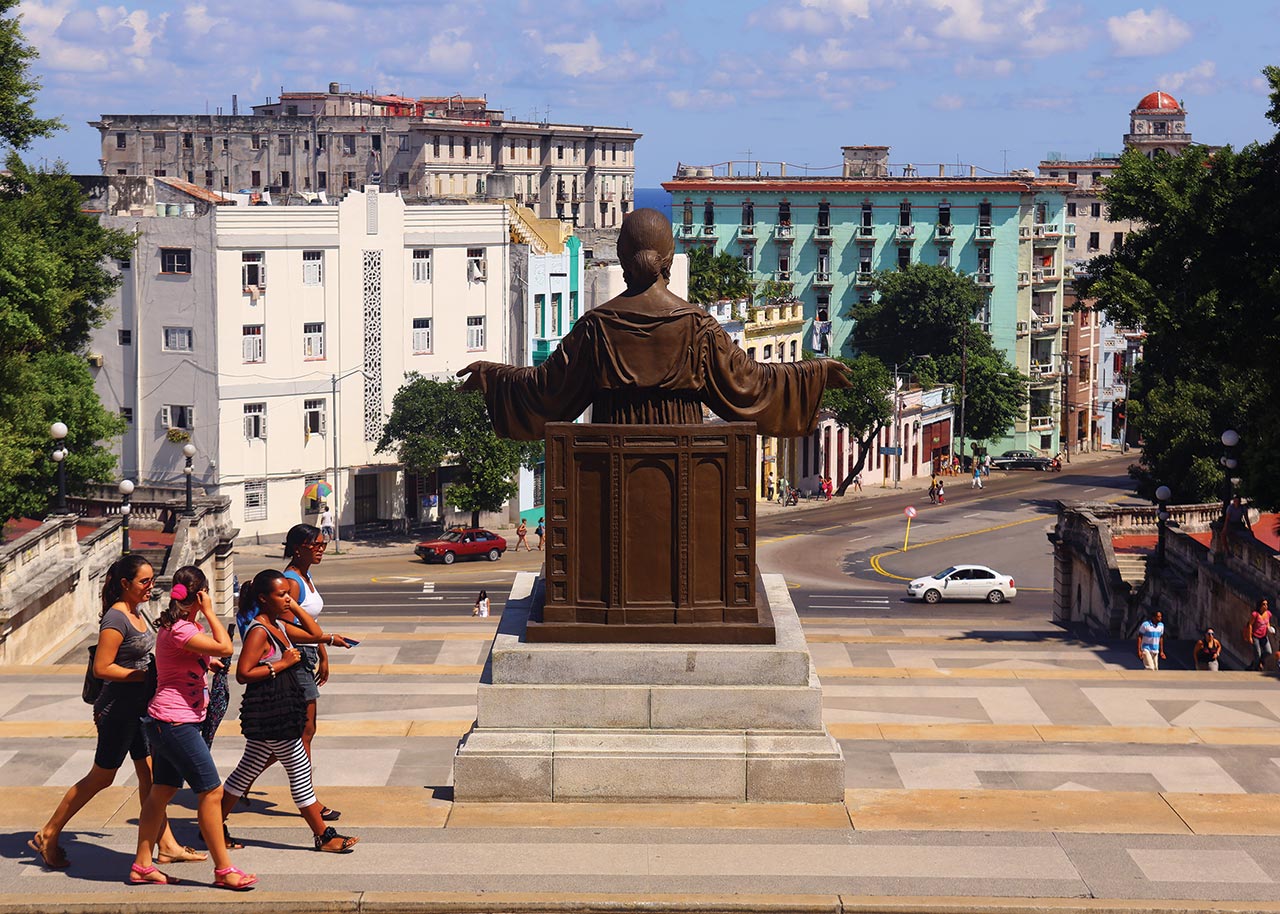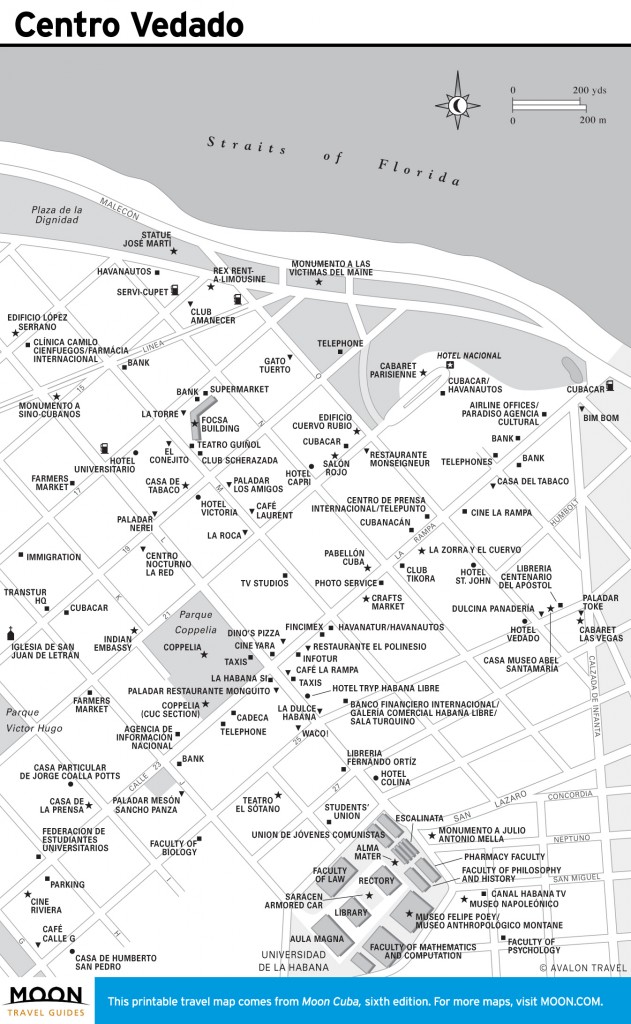The Universidad de la Habana (University of Havana, Calle L y San Lázaro, tel. 07/878-3231, Mon.-Fri. 8am-6pm) was founded by Dominican friars in 1728 and was originally situated on Calle Obispo in Habana Vieja. During the 20th century the university was an autonomous “sacred hill” that neither the police nor the army could enter—although gangsters and renegade politicians roamed the campus amid the jungle of Cuban politics. Visitors can stroll the grounds. The campus is off-limits on weekends, and the campus and museums are closed July-August.
During the 20th century the university was an autonomous “sacred hill” that neither the police nor the army could enter.From Calle L, the university is entered via an immense, 50-meter-wide stone staircase: the 88-step Escalinata (staircase). A patinated bronze statue of the Alma Mater cast by Czech sculptor Mario Korbel in 1919 sits atop the staircase. The twice-life-size statue of a woman is seated in a bronze chair with six classical bas-reliefs representing various disciplines taught at the university. She is dressed in a long-sleeve tunic and extends her bare arms, beckoning all those who desire knowledge.
Statue of the Alma Mater atop the Escalinata. Photo © Christopher P. Baker.
The staircase is topped by a columned portico, beyond which lies the peaceful Plaza Ignacio Agramonte, surrounded by classical buildings. A Saracen armored car in the quadrant was captured in 1958 by students in the fight against Batista. The Aula Magna (Great Hall) features magnificent murals by Armando Menocal, plus the marble tomb of independence leader Félix Varela (1788-1853).
The Monumento a Julio Antonio Mella, across Calle L at the base of the Escalinata, contains the ashes of Mella, founder of the University Students’ Federation and, later, of the Cuban Communist Party.
The Escuela de Ciencias (School of Sciences), on the south side of the quadrant, contains the Museo de Ciencias Naturales Felipe Poey (Felipe Poey Museum of Natural Sciences, tel. 07/877-4221, Mon.-Thurs. 9am-noon and 1pm-4pm, Fri. 9am-noon, free), displaying endemic species from alligators to sharks, stuffed or pickled for posterity. The museum dates from 1842 and is named for its French-Cuban founder. Poey (1799-1891) was versed in every field of the sciences and founded the Academy of Medical Sciences, the Anthropological Society of Cuba, and a half dozen other societies. The Museo Anthropológico Montane (Montane Anthropology Museum, tel. 07/879-3488, Mon.-Thurs. 9am-noon and 1pm-4pm, Fri. 9am-noon, free), on the second floor, displays pre-Columbian artifacts.

Centro Vedado
Excerpted from the First Edition of Moon Havana.